MARKETING
23 Conversion Rate Optimization Tools for Research, Feedback, Analytics & More

Believe it or not, driving traffic to your website — albeit challenging — isn’t enough to sustain your business. To truly leverage that investment in traffic, marketers must use conversion rate optimization, or CRO, to convince said traffic to complete the desired action.
The list below outlines many helpful tools for marketers looking to optimize their conversion rates. From high-level changes like landing page and email design and inspiration to in-depth insights on how your visitors navigate through your content, these tools will help you improve your site’s performance.
To help you understand the tools and their uses, we’ve also broken this list into a few major categories:
Ready? Let’s start converting.
Conversion Rate Optimization Tools
- HubSpot
- HelloBar
- Sumo
- BuzzSumo
- SimilarWeb
- Land-book
- Really Good Emails
- SubjectLine.com
- Headline Analyzer
- Kissmetrics
- Google Analytics
- HubSpot Website Grader
- Hotjar
- Clicktale
- Clicky
- Crazy Egg
- Heatmap.me
- Intercom
- Qualaroo
- SurveyMonkey
- Five Second Test
- Optimizely
- Effective Experiments
Lead Capture Tools
These are the tools you will use to capture more leads on your site, thus improving your CRO analytics . While most conversion-focused content has a built-in form or CTA, these tools act as additional lead capture mechanisms to boost the number of leads that convert on your content.
1. HubSpot
Price: Free
It’s Google Analytics meets SumoMe meets a CRM. Sounds cool, right? It starts with an exit intent popup CTA, then syncs with your website’s existing forms to learn about your site visitors and their path through your pages.

HubSpot’s tools give you in-depth contact insights on prospects and current contacts in your database. It also pairs its contacts database with a dashboard that shows you a high-level view of which marketing efforts are paying off and converting and which ones aren’t.
2. HelloBar
Price: Free plan or $29/month to $49/month
HelloBar is a lead capture tool that allows you to add a popup form to your website to grow your email list, promote your social pages, showcase a sale, or other lead generation strategies. The free version allows you to create one modal that’s shown to every 10th visitor. However, premium plans offer more advanced call to action (CTA) options.

3. Sumo
Price: Free plan or $49/month
Sumo offers a suite of free tools to help you increase your site conversions. For lead capture, it offers a “Welcome Mat” popup CTA, a “Smart Bar” to increase email subscribers, a scroll-triggered box, and a “Contact Us” form.

Along with their Google Analytics research tools, the Sumo suite helps you gain on-page insights and increase your email list.
Research Tools
Before you create any content, call upon these tools to draw inspiration and check out what other smart marketers have seen success with in the past.
4. BuzzSumo
Price: $99/month to $499/month
The best content gets shared and linked the most. So what better way to gain preliminary insights than to compile all of the most shared content on your particular topic?
With BuzzSumo, all you have to do is enter the keyword or topic. Then, it’ll pull together the most shared and linked content on that topic. Time frames range from the last day, week, month, or year.

So if you’re trying to optimize the landing page for your new webinar on cat fashion, all you have to do is enter “cat fashion.” BuzzSumo will then give you the best articles, resources, videos, and more on the fascinating topic of cat couture.
You’ll then be able to dig in and explore some of the key elements that made these pages popular. With that, you can go back and incorporate them into your own content.
5. SimilarWeb
Price: Contact for pricing
Knowing where your website visitors came from can (and should) have a big impact on the type of content you create. With SimilarWeb, you can see where your traffic is coming from, which keywords are fueling your organic traffic, and what other sites are considered most similar to yours. You can also compare analytics to find out the website conversion optimization by looking over data.

With this information, you’ll be able to optimize content for your biggest traffic sources and dig in to see what competitor sites are doing to drive conversions.
6. Land-book
Price: Free
If you’re creating a landing page from scratch, getting started can be difficult. Luckily there’s Land-book, a free collection of the web’s best-designed landing pages.

With Land-book, you can explore how top companies use elements like copy, positioning, layout, and design to drive conversions. Pick and choose your favorite elements from the Land-book database, and then incorporate them into your own landing page.
7. Really Good Emails
Price: Free
In today’s marketing landscape, if you want to get your message across, you’d better know a thing or two about visual communication and design.
Don’t know a thing or two about either? Enter Really Good Emails.

Similar to Land-book, Really Good Emails is a database of the web’s best-designed emails from the world’s most innovative companies. Use this as a resource to see how you can design your email to get your message across in the best way possible, as fast as possible.
(Check out this post for even more resources where you can find great marketing examples.)
8. SubjectLine.com
Price: Free
When sending an email, the subject line can either make or break your performance. Before you choose which ones to send, check them out using this awesome resource.

SubjectLine.com has tested over three million subject lines and has a tool to evaluate your potential options. It gives a deliverability and marketing score, plus advice on improving.
9. Headline Analyzer
Price: Free
CoSchedule’s headline analyzer gives a score of 1–100 to gauge the effectiveness of titles. The score is calculated based on word usage, grammar, vocabulary, type of headline, character, and word count.

The tool shows you what your headline looks like on Google and in an email subject line. This tool serves as a great litmus test to generally know how well your headline will perform.
CRO Analytics Tools
These are the tools you will use to measure and track your content’s performance. You can use the CRO analytics to fully analyze the dips, jumps, and fluctuations in your conversion rate.
10. Kissmetrics
Price: Contact for pricing
Kissmetrics is a complex tool that integrates with your email service provider to make it easy to analyze your audience and email them in specific cohorts.

With Kissmetrics, you can learn the path that your customers have taken through your website. You can also conduct A/B tests, build data sets (without SQL), perform website conversion optimization, and assess the ROI from your campaigns.
11. Google Analytics
Price: Free for basic, contact sales for premium
Google Analytics is a free way to track your website visitors. You can see how long it takes visitors to bounce from your pages, if visitors complete goals from a certain path, and which sources bring people to your website.

What’s great about Google Analytics is that it allows you to see which keywords people are using to find your page, devices they’re searching on, and uncover demographic data. However, there are no specific emails or contact information associated with your site visitors.
12. HubSpot Website Grader
Price: Free
Website Grader is a great way to get a quick snapshot of a website’s overall performance. It gives insights on performance factors (including speed, page size, and page requests), mobile responsiveness and appearance, SEO (page titles, meta descriptions, headings, and site map), and security. It’s great for website conversion optimization.

From there, the tool devises a grade and provides suggestions on how to improve, which makes it easy to come up with some quick wins that’ll help you boost conversions.
Mouse Tracking and Heat Mapping Tools
These are the tools you will use to see how people interact with your content, including how they scroll and where they click.
13. Hotjar
Price: Free for Basic, $29/month
Once you’ve nailed the basics like landing pages, CTAs, pop ups, and content, you’re ready for some more advanced conversion rate optimization. Hotjar offers heat maps and screen recordings. They enable you to track how much your page is being viewed and how visitors navigate your website.

Hotjar also offers analytics, so you can see how well your pages are performing. This is helpful to see what’s working and what you can change to increase conversion.
14. Clicktale
Price: Contact for pricing
Clicktale is similar to Hotjar, as it also offers heat maps to help you determine the most valuable real estate on your pages, scroll depth (where is the “fold” on your website?), click tracking, and link analysis.

Using these tools, you’ll have the information you need to organize content, CTAs, and page design in a way that makes the most sense for engagement.
15. Clicky
Price: Free plan, or $9.99/month to $149/month
Clicky gives you real-time analytics on the visitors to your website. It tells you where people are accessing your site, how long they’ve stayed on each page, and how many visitors are actively online. The resource also offers heat maps and scroll tracking.

Clicky is an excellent one-stop-shop for customer behavior. You’ll have multiple formats at your disposal to leverage for optimizing the performance of your website — so you can convert as many leads as possible.
16. Crazy Egg
Price: $24/month to $249/month
Crazy Egg offers a full suite of heat maps and click tracking, with the additional functionality segment clicks by source and evaluating link effectiveness. The basic package is fairly inexpensive and gives great insights into how effective each website page is.

17. Heatmap.me
Price: Free plan or up to $100/month
Heatmap.me is a great free option for anyone looking to start exploring heat maps, responsive web design tests, and real-time page statistics. Heatmap.me can also track dynamic elements on your site in the heat map tool. Think slider bars, photo galleries, and other interactive sections.

When you use the tool, you’ll see real-time analytics. It gives you important data you want to see, such as CTR and page performance. They’re easy to analyze for beginners and provide the numbers you need to enhance success.
Feedback Tools
These are the tools you’ll use to engage and receive feedback from your visitors. Feedback tools include surveys, polls, messaging, and user testing programs.
18. Intercom
Price: $87/month to $153/month
You can use chat tools to acquire new customers and chat with existing customers.

As a CRO analytics tool, you can use Intercom to communicate with website prospects to learn if they need additional help, find out how their experience is going, and learn how you can improve. It also allows you to track leads and use a shared inbox with your team.
19. Qualaroo
Price: $149/month to $499/month
Using chat windows doesn’t have to be limited to just being live. In fact, Qualaroo proves that. It offers popups to collect live feedback from website viewers.

With this information, you can tailor a site experience, target specific customers, and learn what issues people may be experiencing. This tool is extremely helpful at all stages of the funnel, and is frequently utilized in the e-commerce space.
20. SurveyMonkey
Price: $25/month to $99/month
SurveyMonkey has a free option for those just starting with survey research. You can use this tool to learn demographic information, discover which types of content your prospects and blog subscribers prefer, and get product feedback.

Survey your customers about their satisfaction. You’ll get great insight straight from the source about what draws your audience to your company. From these results, you can work on improving conversion methods.
21. Five Second Test
Price: $50/month to $100/month
UsabilityHub has an awesome community-fueled tool called Five Second Test that allows users to upload a product, app experience, or design and have the community test it before launch. For example, one of the tests you can run is a click test, which will give you a heat map of page performance.

You get responses about recall, general feedback, and UI thoughts. This is a great way to have opinions. Five Second Test also offers click, preference, question, and navflow tests for other website and UI questions. You can also design surveys with the tool.
Experiment Tools
These are the tools you’ll use to manage, plan, and execute A/B and multivariate tests. Some of these tools will help you turn ideas into experiments, while others will help you create the variations and run the actual tests on your site.
22. Optimizely
Price: Contact for pricing
Testing is hard. It’s hard to come up with a good control group, find a large sample, and determine if your experiment is statistically significant. Luckily, Optimizely helps a lot with all of that – and then some. With Optimizely, you conduct tests across all devices and platforms, then figure out if it’s significant. The software offers A/B, multiple page, and multivariate tests.

Optimizely’s tool gives you a full, robust report of test results (example shown above). You’ll see interactions and, best of all, sign up clicks. Your report will tell you how many leads each test variant earned, so you can choose the best.
23. Effective Experiments
Price: Contact for pricing
Effective Experiments is a concise way to track all of your experiments. If you have tons of Excel spreadsheets cross-referenced with Google Analytics data, you are probably going crazy trying to keep track of everything. This tool puts it all in one place and helps you determine statistical significance.

How to Shop for Conversion Rate Optimization Tools
It can be hard to shop for the best conversion rate optimization tools, so we gathered together these five tips to keep in mind:
- Sign up for trials before making a decision.
- Be thorough when searching for reviews.
- Go for quality, not quantity, when it comes to price.
- Ask other marketers what they are using.
- Read reports from other companies about CRO.
The Benefits of CRO Analytics Tools
There are several benefits of selecting CRO analytics tools. Some include:
- Being able to effectively track ROI.
- Using tools to create an engaging headline.
- Capture customer leads.
- Collect marketing research data.
Now, you’re armed and ready to start improving conversion rates across your website conversion optimization and marketing efforts. These tools range from free and for beginners to robust and more advanced. Feel out which options seem right for you, and soon you’ll be upgrading to the more complex tools when you’ve mastered the basics.
Editor’s note: This post was originally published in July 2020 and has been updated for comprehensiveness.
Source link
MARKETING
How to create editorial guidelines that are useful + template
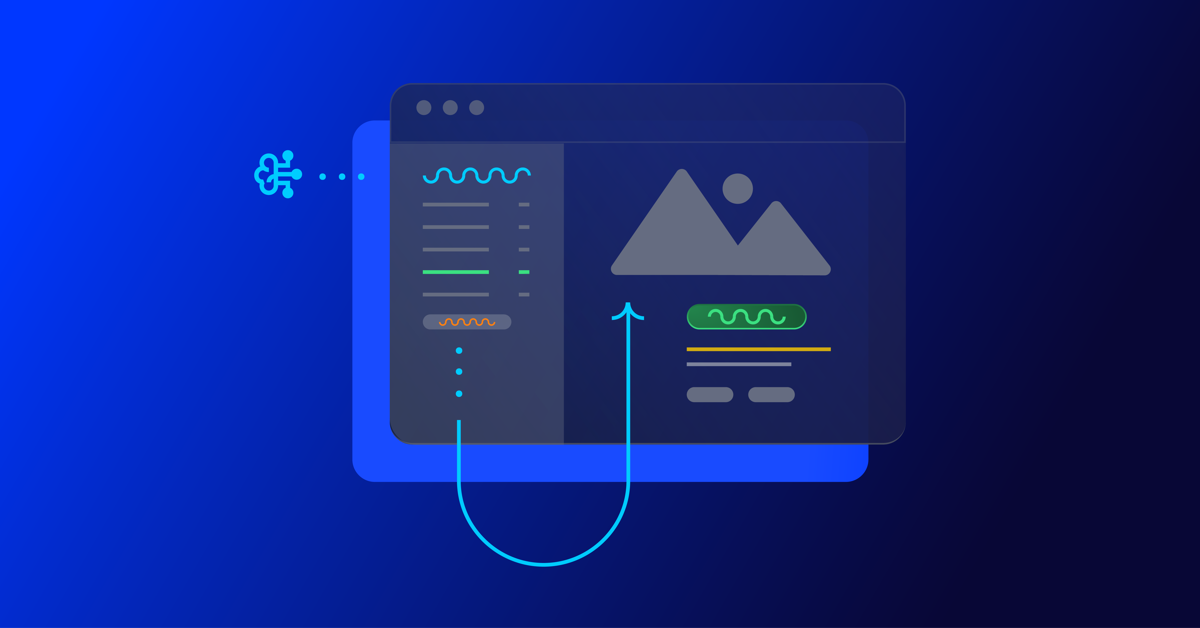
Before diving in to all things editorial guidelines, a quick introduction. I head up the content team here at Optimizely. I’m responsible for developing our content strategy and ensuring this aligns to our key business goals.
Here I’ll take you through the process we used to create new editorial guidelines; things that worked well and tackle some of the challenges that come with any good multi – stakeholder project, share some examples and leave you with a template you can use to set your own content standards.
What are editorial guidelines?
Editorial guidelines are a set of standards for any/all content contributors, etc. etc. This most often includes guidance on brand, tone of voice, grammar and style, your core content principles and the types of content you want to produce.
Editorial guidelines are a core component of any good content strategy and can help marketers achieve the following in their content creation process:
- Consistency: All content produced, regardless of who is creating it, maintains a consistent tone of voice and style, helping strengthen brand image and making it easier for your audience to recognize your company’s content
- Quality Control: Serves as a ‘North Star’ for content quality, drawing a line in the sand to communicate the standard of content we want to produce
- Boosts SEO efforts: Ensures content creation aligns with SEO efforts, improving company visibility and increasing traffic
- Efficiency: With clear guidelines in place, content creators – external and internal – can work more efficiently as they have a clear understanding of what is expected of them
Examples of editorial guidelines
There are some great examples of editorial guidelines out there to help you get started.
Here are a few I used:
1. Editorial Values and Standards, the BBC
Ah, the Beeb. This really helped me channel my inner journalist and learn from the folks that built the foundation for free quality journalism.
How to create editorial guidelines, Pepperland Marketing
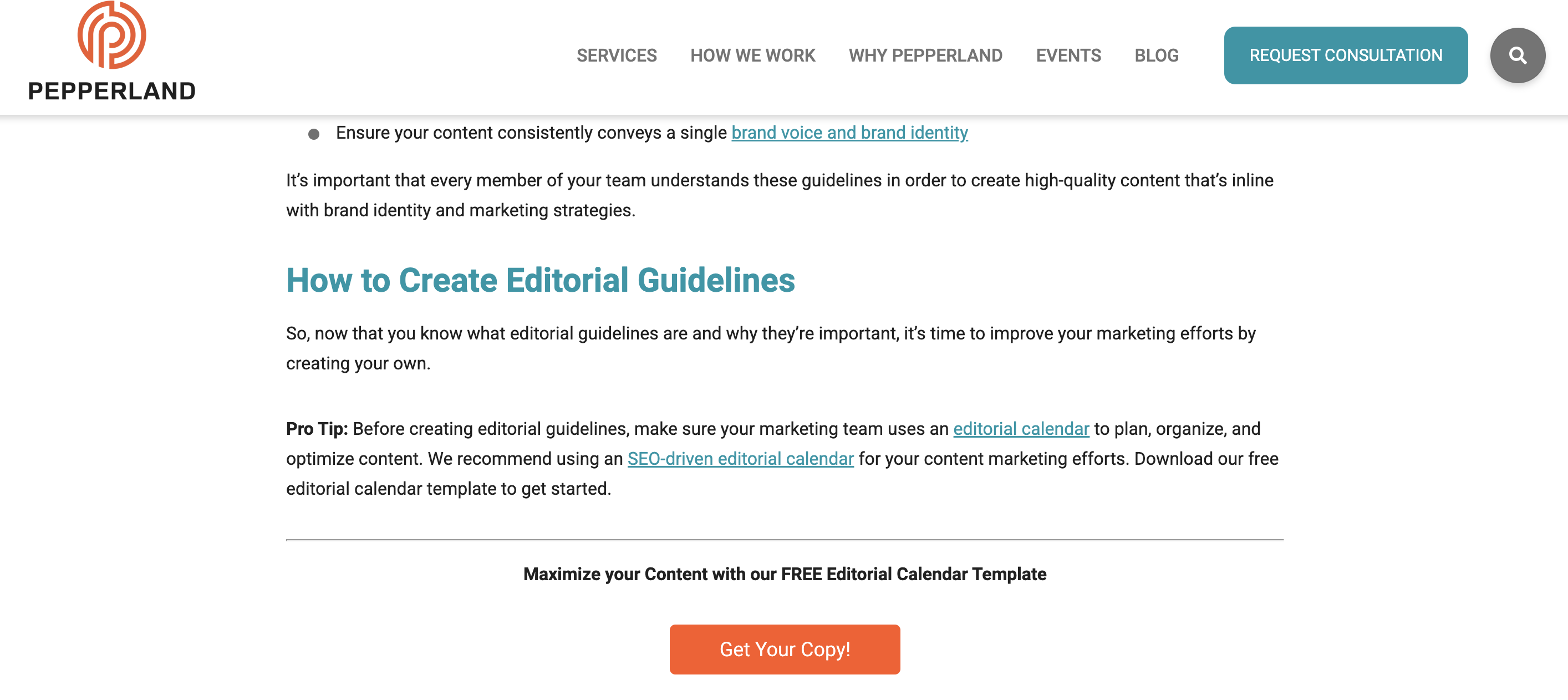
After taking a more big picture view I recognized needed more focused guidance on the step by step of creating editorial guidelines.
I really liked the content the good folks at Pepperland Marketing have created, including a free template – thanks guys! – and in part what inspired me to create our own free template as a way of sharing learnings and helping others quickstart the process of creating their own guidelines.
3. Writing guidelines for the role of AI in your newsroom?… Nieman Lab
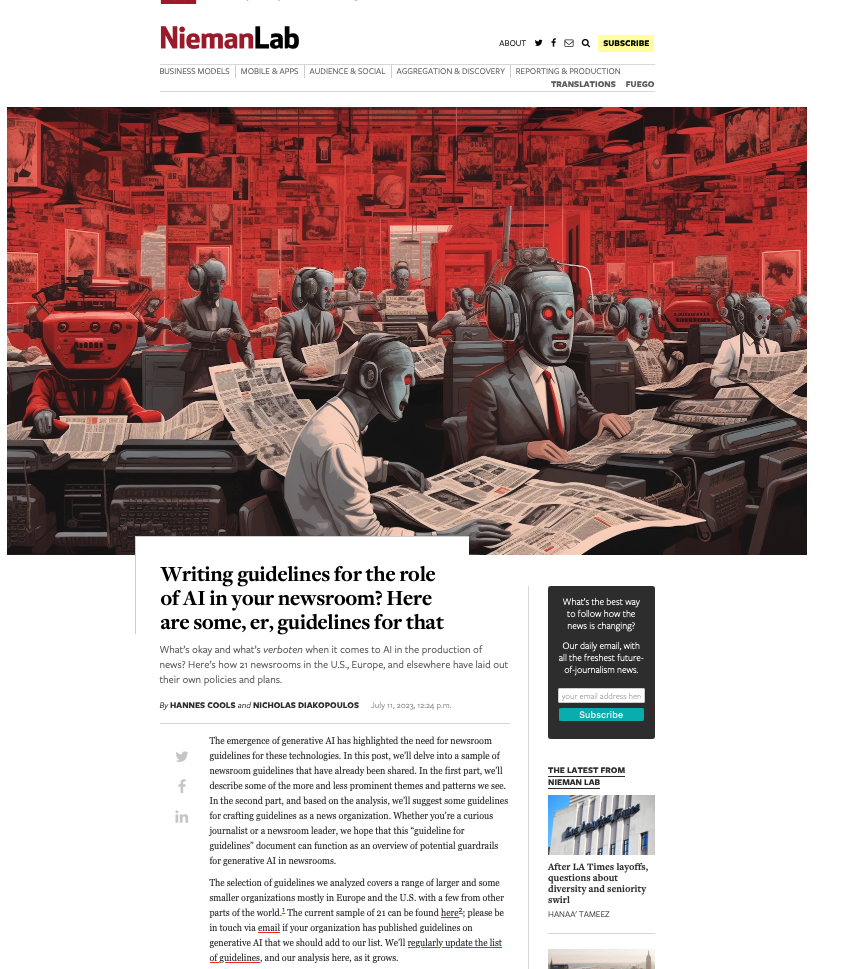
As well as provide guidance on content quality and the content creation process, I wanted to tackle the thorny topic of AI in our editorial guidelines. Specifically, to give content creators a steer on ‘fair’ use of AI when creating content, to ensure creators get to benefit from the amazing power of these tools, but also that content is not created 100% by AI and help them understand why we feel that contravenes our core content principles of content quality.
So, to learn more I devoured this fascinating article, sourcing guidance from major media outlets around the world. I know things change very quickly when it comes to AI, but I highly encourage reading this and taking inspiration from how these media outlets are tackling this topic.
Learn more: The Marketer’s Guide to AI-generated content
Why did we decide to create editorial guidelines?
1. Aligning content creators to a clear vision and process
Optimizely as a business has undergone a huge transformation over the last 3 years, going through rapid acquisition and all the joys and frustrations that can bring. As a content team, we quickly recognized the need to create a set of clear and engaging guidelines that helps content creators understand how and where they can contribute, and gave a clear process to follow when submitting a content idea for consideration.
2. Reinvigorated approach to brand and content
As a brand Optimizely is also going through a brand evolution – moving from a more formal, considered tone of voice to one that’s much more approachable, down to earth and not afraid to use humor, different in content and execution.
See, our latest CMS campaign creative:
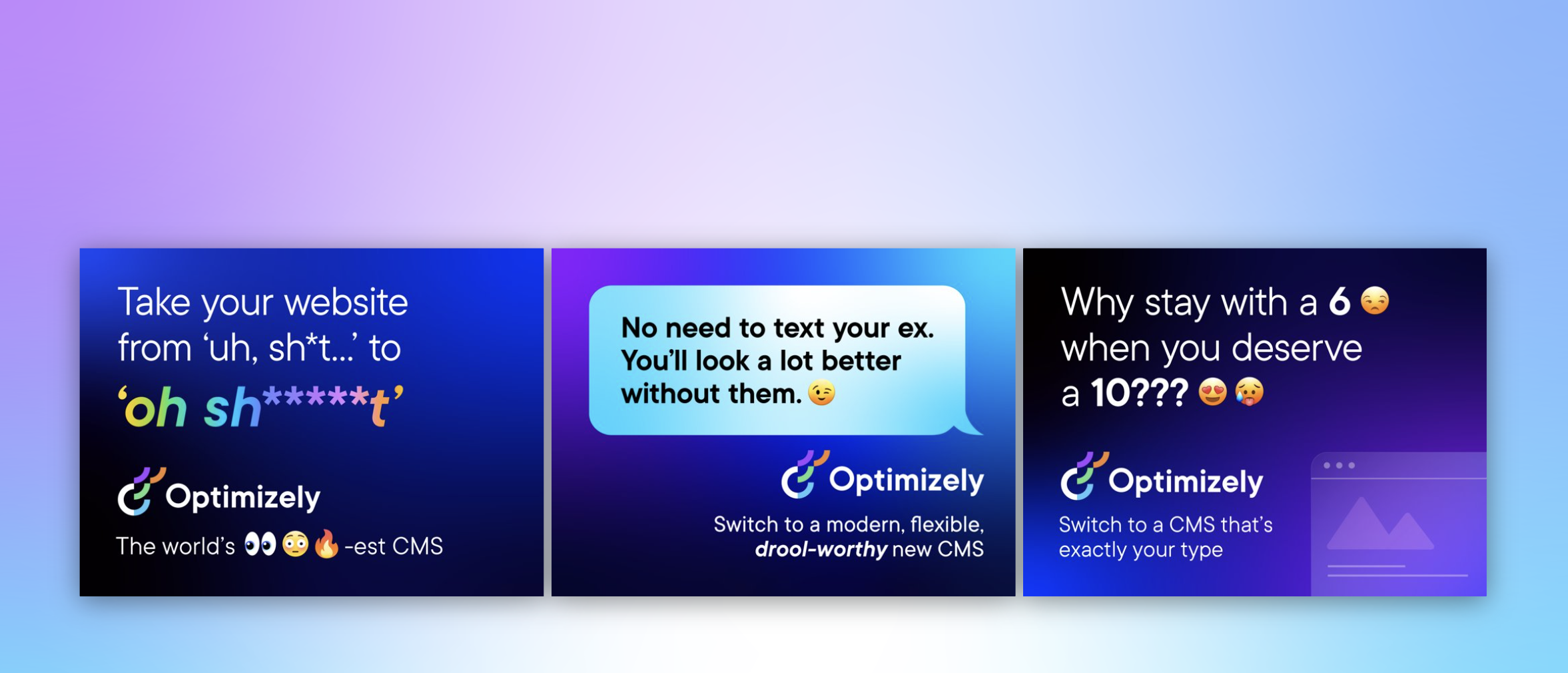
It’s pretty out there in terms of creative and messaging. It’s an ad campaign that’s designed to capture attention yes, but also – to demonstrate our abilities as a marketing team to create this type of campaign that is normally reserved for other more quote unquote creative industries.
We wanted to give guidance to fellow content creators outside the team on how they can also create content that embraces this evolved tone of voice, while at the same time ensuring content adheres to our brand guidelines.
3. Streamline content creation process
Like many global enterprises we have many different content creators, working across different time zones and locations. Documenting a set of guidelines and making them easily available helps content creators quickly understand our content goals, the types of content we want to create and why. It would free up content team time spent with individual contributors reviewing and editing submissions, and would ensure creation and optimization aligns to broader content & business goals.
It was also clear that we needed to document a process for submitting content ideas, so we made sure to include this in the guidelines themselves to make it easy and accessible for all contributors.
4. 2023 retrospective priority
As a content team we regularly review our content strategy and processes to ensure we’re operating as efficiently as possible.
In our last retrospective. I asked my team ‘what was the one thing I could do as a manager to help them be more impactful in their role?’
Editorial guidelines was the number 1 item on their list.
So off we went…
What we did
- Defined a discrete scope of work for the first version of the editorial guidelines, focusing on the Blog and Resources section of the website. This is where the content team spends most of its time and so has most involvement in the content creation process. Also where the most challenging bottlenecks have been in the past
- Research. Reviewed what was out there, got my hands on a few free templates and assembled a framework to create a first version for inputs and feedback
- Asked content community – I put a few questions out to my network on LinkedIn on the topic of content guidelines and content strategy, seeking to get input and guidance from smart marketers.
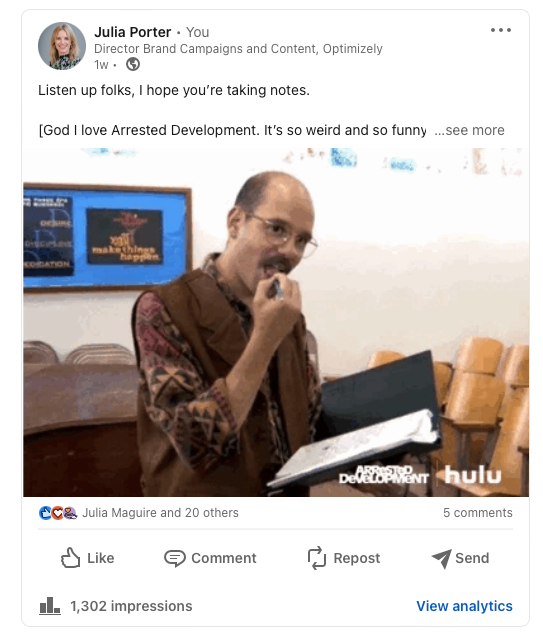
- Invited feedback: Over the course of a few weekswe invited collaborators to comment in a shared doc as a way of taking iterative feedback, getting ideas for the next scope of work, and also – bringing people on the journey of creating the guidelines. Look at all those reviewers! Doing this within our Content Marketing Platform (CMP) ensured that all that feedback was captured in one place, and that we could manage the process clearly, step by step:
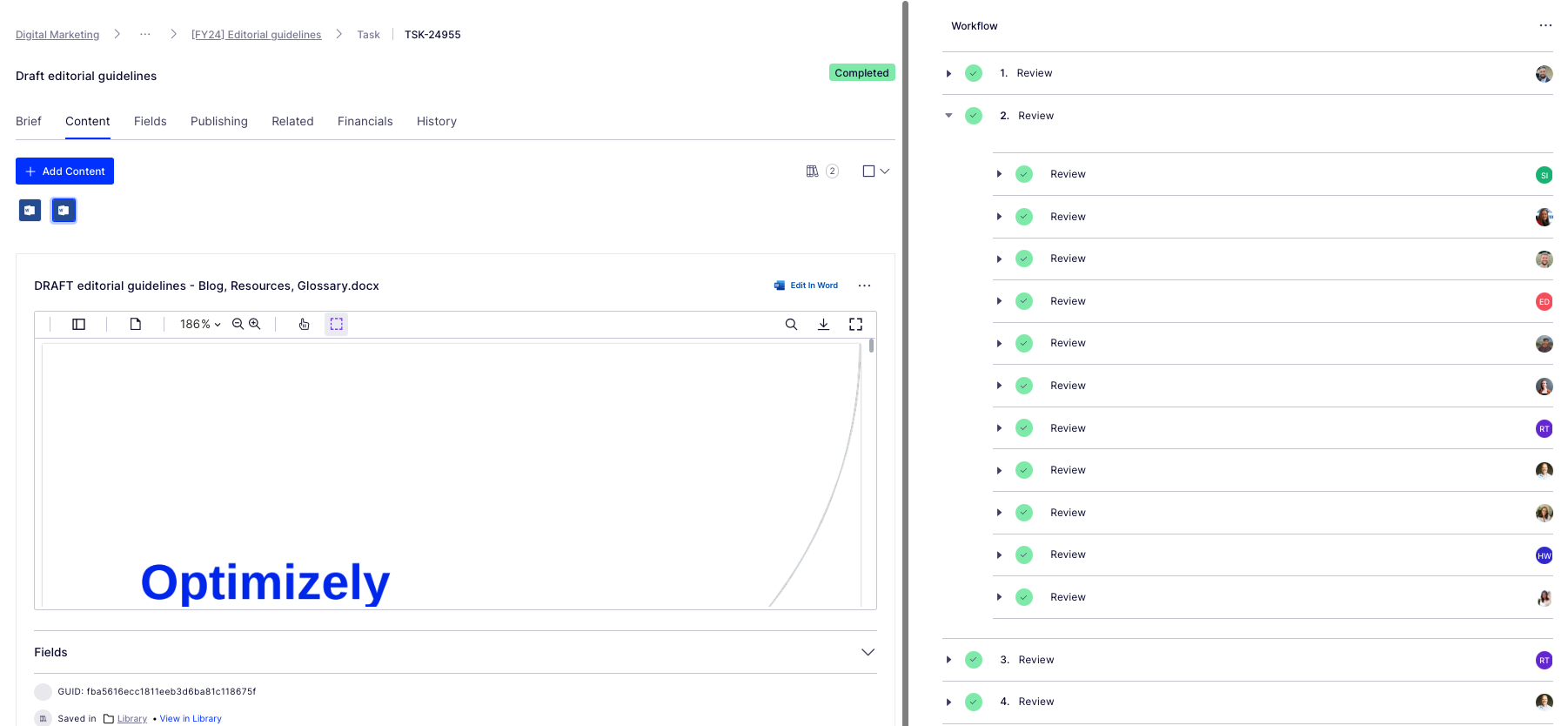
Look at all those collaborators! Thanks guys! And all of those beautiful ticks, so satisfying. So glad I could crop out the total outstanding tasks for this screen grab too (Source – Optimizely CMP)
- Updated content workflow: Now we have clear, documented guidance in place, we’ve included this as a step – the first step – in the workflow used for blog post creation:
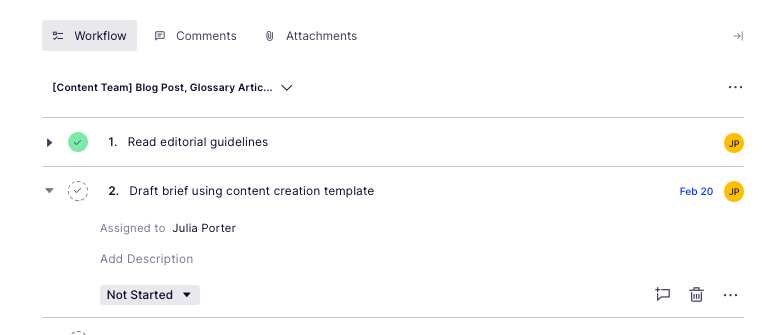
Source: Optimizely CMP
Results
It’s early days but we’re already seeing more engagement with the content creation process, especially amongst the teams involved in building the guidelines (which was part of the rationale in the first place :))

Source: My Teams chat
It’s inspired teams to think differently about the types of content we want to produce going forwards – for the blog and beyond.
I’d also say it’s boosted team morale and collaboration, helping different teams work together on shared goals to produce better quality work.
What’s next?
We’re busy planning wider communication of the editorial guidelines beyond marketing. We’ve kept the original draft and regularly share this with existing and potential collaborators for ongoing commentary, ideas and feedback.
Creating guidelines has also sparked discussion about the types of briefs and templates we want and need to create in CMP to support creating different assets. Finding the right balance between creative approach and using templates to scale content production is key.
We’ll review these guidelines on a quarterly basis and evolve as needed, adding new formats and channels as we go.
Key takeaways
- Editorial guidelines are a useful way to guide content creators as part of your overall content strategy
- Taking the time to do research upfront can help accelerate seemingly complex projects. Don’t be afraid to ask your community for inputs and advice as you create
- Keep the scope small at first rather than trying to align everything all at once. Test and learn as you go
- Work with stakeholders to build guidelines from the ground up to ensure you create a framework that is useful, relevant and used
And lastly, here’s that free template we created to help you build or evolve your own editorial guidelines!
MARKETING
Effective Communication in Business as a Crisis Management Strategy

Everyday business life is full of challenges. These include data breaches, product recalls, market downturns and public relations conflicts that can erupt at any moment. Such situations pose a significant threat to a company’s financial health, brand image, or even its further existence. However, only 49% of businesses in the US have a crisis communications plan. It is a big mistake, as such a strategy can build trust, minimize damage, and even strengthen the company after it survives the crisis. Let’s discover how communication can transform your crisis and weather the chaos.
The ruining impact of the crisis on business
A crisis can ruin a company. Naturally, it brings losses. But the actual consequences are far worse than lost profits. It is about people behind the business – they feel the weight of uncertainty and fear. Employees start worrying about their jobs, customers might lose faith in the brand they once trusted, and investors could start looking elsewhere. It can affect the brand image and everything you build from the branding, business logo, social media can be ruined. Even after the crisis recovery, the company’s reputation can suffer, and costly efforts might be needed to rebuild trust and regain momentum. So, any sign of a coming crisis should be immediately addressed. Communication is one of the crisis management strategies that can exacerbate the situation.
The power of effective communication
Even a short-term crisis may have irreversible consequences – a damaged reputation, high employee turnover, and loss of investors. Communication becomes a tool that can efficiently navigate many crisis-caused challenges:
- Improved trust. Crisis is a synonym for uncertainty. Leaders may communicate trust within the company when the situation gets out of control. Employees feel valued when they get clear responses. The same applies to the customers – they also appreciate transparency and are more likely to continue cooperation when they understand what’s happening. In these times, documenting these moments through event photographers can visually reinforce the company’s messages and enhance trust by showing real, transparent actions.
- Reputation protection. Crises immediately spiral into gossip and PR nightmares. However, effective communication allows you to proactively address concerns and disseminate true information through the right channels. It minimizes speculation and negative media coverage.
- Saved business relationships. A crisis can cause unbelievable damage to relationships with employees, customers, and investors. Transparent communication shows the company’s efforts to find solutions and keeps stakeholders informed and engaged, preventing misunderstandings and painful outcomes.
- Faster recovery. With the help of communication, the company is more likely to receive support and cooperation. This collaborative approach allows you to focus on solutions and resume normal operations as quickly as possible.
It is impossible to predict when a crisis will come. So, a crisis management strategy mitigates potential problems long before they arise.
Tips on crafting an effective crisis communication plan.
To effectively deal with unforeseen critical situations in business, you must have a clear-cut communication action plan. This involves things like messages, FAQs, media posts, and awareness of everyone in the company. This approach saves precious time when the crisis actually hits. It allows you to focus on solving the problem instead of intensifying uncertainty and panic. Here is a step-by-step guide.
Identify your crisis scenarios.
Being caught off guard is the worst thing. So, do not let it happen. Conduct a risk assessment to pinpoint potential crises specific to your business niche. Consider both internal and external factors that could disrupt normal operations or damage the online reputation of your company. Study industry-specific issues, past incidents, and current trends. How will you communicate in each situation? Knowing your risks helps you prepare targeted communication strategies in advance. Of course, it is impossible to create a perfectly polished strategy, but at least you will build a strong foundation for it.
Form a crisis response team.
The next step is assembling a core team. It will manage communication during a crisis and should include top executives like the CEO, CFO, and CMO, and representatives from key departments like public relations and marketing. Select a confident spokesperson who will be the face of your company during the crisis. Define roles and responsibilities for each team member and establish communication channels they will work with, such as email, telephone, and live chat. Remember, everyone in your crisis response team must be media-savvy and know how to deliver difficult messages to the stakeholders.
Prepare communication templates.
When a crisis hits, things happen fast. That means communication needs to be quick, too. That’s why it is wise to have ready-to-go messages prepared for different types of crises your company may face. These messages can be adjusted to a particular situation when needed and shared on the company’s social media, website, and other platforms right away. These templates should include frequently asked questions and outline the company’s general responses. Make sure to approve these messages with your legal team for accuracy and compliance.
Establish communication protocols.
A crisis is always chaotic, so clear communication protocols are a must-have. Define trigger points – specific events that would launch the crisis communication plan. Establish a clear hierarchy for messages to avoid conflicting information. Determine the most suitable forms and channels, like press releases or social media, to reach different audiences. Here is an example of how you can structure a communication protocol:
- Immediate alert. A company crisis response team is notified about a problem.
- Internal briefing. The crisis team discusses the situation and decides on the next steps.
- External communication. A spokesperson reaches the media, customers, and suppliers.
- Social media updates. A trained social media team outlines the situation to the company audience and monitors these channels for misinformation or negative comments.
- Stakeholder notification. The crisis team reaches out to customers and partners to inform them of the incident and its risks. They also provide details on the company’s response efforts and measures.
- Ongoing updates. Regular updates guarantee transparency and trust and let stakeholders see the crisis development and its recovery.
Practice and improve.
Do not wait for the real crisis to test your plan. Conduct regular crisis communication drills to allow your team to use theoretical protocols in practice. Simulate different crisis scenarios and see how your people respond to these. It will immediately demonstrate the strong and weak points of your strategy. Remember, your crisis communication plan is not a static document. New technologies and evolving media platforms necessitate regular adjustments. So, you must continuously review and update it to reflect changes in your business and industry.
Wrapping up
The ability to handle communication well during tough times gives companies a chance to really connect with the people who matter most—stakeholders. And that connection is a foundation for long-term success. Trust is key, and it grows when companies speak honestly, openly, and clearly. When customers and investors trust the company, they are more likely to stay with it and even support it. So, when a crisis hits, smart communication not only helps overcome it but also allows you to do it with minimal losses to your reputation and profits.
MARKETING
Should Your Brand Shout Its AI and Marketing Plan to the World?

To use AI or not to use AI, that is the question.
Let’s hope things work out better for you than they did for Shakespeare’s mad Danish prince with daddy issues.
But let’s add a twist to that existential question.
CMI’s chief strategy officer, Robert Rose, shares what marketers should really contemplate. Watch the video or read on to discover what he says:
Should you not use AI and be proud of not using it? Dove Beauty did that last week.
Should you use it but keep it a secret? Sports Illustrated did that last year.
Should you use AI and be vocal about using it? Agency giant Brandtech Group picked up the all-in vibe.
Should you not use it but tell everybody you are? The new term “AI washing” is hitting everywhere.
What’s the best option? Let’s explore.
Dove tells all it won’t use AI
Last week, Dove, the beauty brand celebrating 20 years of its Campaign for Real Beauty, pledged it would NEVER use AI in visual communication to portray real people.
In the announcement, they said they will create “Real Beauty Prompt Guidelines” that people can use to create images representing all types of physical beauty through popular generative AI programs. The prompt they picked for the launch video? “The most beautiful woman in the world, according to Dove.”
I applaud them for the powerful ad. But I’m perplexed by Dove issuing a statement saying it won’t use AI for images of real beauty and then sharing a branded prompt for doing exactly that. Isn’t it like me saying, “Don’t think of a parrot eating pizza. Don’t think about a parrot eating pizza,” and you can’t help but think about a parrot eating pizza right now?
Brandtech Group says it’s all in on AI
Now, Brandtech Group, a conglomerate ad agency, is going the other way. It’s going all-in on AI and telling everybody.
This week, Ad Age featured a press release — oops, I mean an article (subscription required) — with the details of how Brandtech is leaning into the takeaway from OpenAI’s Sam Altman, who says 95% of marketing work today can be done by AI.
A Brandtech representative talked about how they pitch big brands with two people instead of 20. They boast about how proud they are that its lean 7,000 staffers compete with 100,000-person teams. (To be clear, showing up to a pitch with 20 people has never been a good thing, but I digress.)
OK, that’s a differentiated approach. They’re all in. Ad Age certainly seemed to like it enough to promote it. Oops, I mean report about it.
False claims of using AI and not using AI
Offshoots of the all-in and never-will approaches also exist.
The term “AI washing” is de rigueur to describe companies claiming to use AI for something that really isn’t AI. The US Securities and Exchange Commission just fined two companies for using misleading statements about their use of AI in their business model. I know one startup technology organization faced so much pressure from their board and investors to “do something with AI” that they put a simple chatbot on their website — a glorified search engine — while they figured out what they wanted to do.
Lastly and perhaps most interestingly, companies have and will use AI for much of what they create but remain quiet about it or desire to keep it a secret. A recent notable example is the deepfake ad of a woman in a car professing the need for people to use a particular body wipe to get rid of body odor. It was purported to be real, but sharp-eyed viewers suspected the fake and called out the company, which then admitted it. Or was that the brand’s intent all along — the AI-use outrage would bring more attention?
This is an AI generated influencer video.
Looks 100% real. Even the interior car detailing.
UGC content for your brand is about to get really cheap. ☠️ pic.twitter.com/2m10RqoOW3
— Jon Elder | Amazon Growth | Private Label (@BlackLabelAdvsr) March 26, 2024
To yell or not to yell about your brand’s AI decision
Should a brand yell from a mountaintop that they use AI to differentiate themselves a la Brandtech? Or should a brand yell they’re never going to use AI to differentiate themselves a la Dove? Or should a brand use it and not yell anything? (I think it’s clear that a brand should not use AI and lie and say it is. That’s the worst of all choices.)
I lean far into not-yelling-from-mountaintop camp.
When I see a CEO proudly exclaim that they laid off 90% of their support workforce because of AI, I’m not surprised a little later when the value of their service is reduced, and the business is failing.
I’m not surprised when I hear “AI made us do it” to rationalize the latest big tech company latest rounds of layoffs. Or when a big consulting firm announces it’s going all-in on using AI to replace its creative and strategic resources.
I see all those things as desperate attempts for short-term attention or a distraction from the real challenge. They may get responses like, “Of course, you had to lay all those people off; AI is so disruptive,” or “Amazing. You’re so out in front of the rest of the pack by leveraging AI to create efficiency, let me cover your story.” Perhaps they get this response, “Your company deserves a bump in stock price because you’re already using this fancy new technology.”
But what happens if the AI doesn’t deliver as promoted? What happens the next time you need to lay off people? What happens the next time you need to prove your technologically forward-leaning?
Yelling out that you’re all in on a disruptive innovation, especially one the public doesn’t yet trust a lot is (at best) a business sugar high. That short-term burst of attention may or may not foul your long-term brand value.
Interestingly, the same scenarios can manifest when your brand proclaims loudly it is all out of AI, as Dove did. The sugar high may not last and now Dove has itself into a messaging box. One slip could cause distrust among its customers. And what if AI gets good at demonstrating diversity in beauty?
I tried Dove’s instructions and prompted ChatGPT for a picture of “the most beautiful woman in the world according to the Dove Real Beauty ad.”
It gave me this. Then this. And this. And finally, this.
She’s absolutely beautiful, but she doesn’t capture the many facets of diversity Dove has demonstrated in its Real Beauty campaigns. To be clear, Dove doesn’t have any control over generating the image. Maybe the prompt worked well for Dove, but it didn’t for me. Neither Dove nor you can know how the AI tool will behave.
To use AI or not to use AI?
When brands grab a microphone to answer that question, they work from an existential fear about the disruption’s meaning. They do not exhibit the confidence in their actions to deal with it.
Let’s return to Hamlet’s soliloquy:
Thus conscience doth make cowards of us all;
And thus the native hue of resolution
Is sicklied o’er with the pale cast of thought,
And enterprises of great pith and moment
With this regard their currents turn awry
And lose the name of action.
In other words, Hamlet says everybody is afraid to take real action because they fear the unknown outcome. You could act to mitigate or solve some challenges, but you don’t because you don’t trust yourself.
If I’m a brand marketer for any business (and I am), I’m going to take action on AI for my business. But until I see how I’m going to generate value with AI, I’m going to be circumspect about yelling or proselytizing how my business’ future is better.
HANDPICKED RELATED CONTENT:
Cover image by Joseph Kalinowski/Content Marketing Institute
-
SEARCHENGINES6 days ago
Daily Search Forum Recap: April 19, 2024
-

 WORDPRESS7 days ago
WORDPRESS7 days agoHow to Make $5000 of Passive Income Every Month in WordPress
-

 WORDPRESS6 days ago
WORDPRESS6 days ago13 Best HubSpot Alternatives for 2024 (Free + Paid)
-

 MARKETING6 days ago
MARKETING6 days agoBattling for Attention in the 2024 Election Year Media Frenzy
-

 SEO7 days ago
SEO7 days ago25 WordPress Alternatives Best For SEO
-

 WORDPRESS6 days ago
WORDPRESS6 days ago7 Best WooCommerce Points and Rewards Plugins (Free & Paid)
-

 AFFILIATE MARKETING7 days ago
AFFILIATE MARKETING7 days agoAI Will Transform the Workplace. Here’s How HR Can Prepare for It.
-

 MARKETING7 days ago
MARKETING7 days agoTinuiti Marketing Analytics Recognized by Forrester





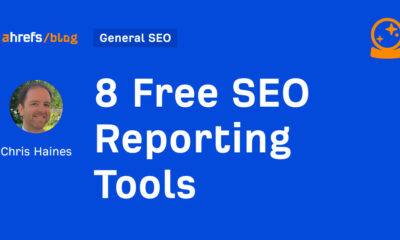

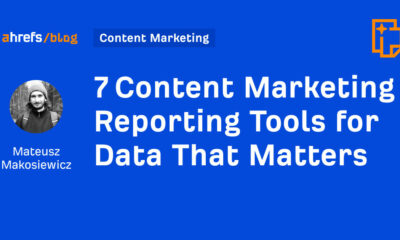







You must be logged in to post a comment Login